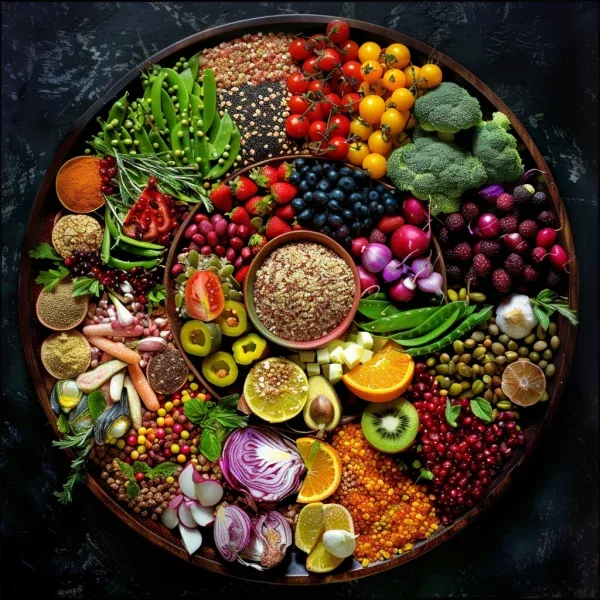by Nadia Sinclair

An Introduction to the Yogic Diet:
Ever wondered what fuels yoga practitioners for their strenuous workouts while aiding in their weight loss journey? Look no further than the yogic diet, highly influenced by the ancient Indian medicinal system, Ayurveda. Each meal is seen as a harmonious blend of diverse energies referred to as ‘gunas’: energetic (rajas), static (tamas), and harmonious/balanced (sattvas). These energies are seen as the dominant forces in all foods.
The Triad of Yogic Foods:
Based on the governing energies, ‘gunas’, all food is categorized into three groups:
- Sattvic: Believed to be pure and wholesome, it includes vegetarian-friendly foods like pulses, veggies, fruits, nuts, seeds, wholegrain bread, and all dairy products.
- Tamasic: These rich and heavy foods, such as meat, alcohol, junk food, and super sweet foods, are advised to be consumed minimally.
- Rajasic: Foods with strong, stimulating flavors such as coffee, chocolate, chili, and strong spices fall under this category.
Essentials to Following a Yogic Diet Plan:
Don’t worry, despite its unusual nomenclature, the yogic diet is actually a well-balanced diet that even nutritionists would applaud. Here’s how you can integrate it into your lifestyle:
Prioritize Natural Foods:
Include plenty of fresh fruits, vegetables, pulses, whole grains, and seeds as dietary staples. Whenever possible, choose organic and locally sourced produce for maximum nutritional value.
Avoid Processed Foods:
In the yogic philosophy, these foods are seen as low in ‘prana’ or vital energy, leaving you feeling fatigued and potentially leading to weight gain. Therefore, it’s best to exclude items with white flour, excessive salt, and long lists of unfamiliar ingredients.
Use Natural Sweeteners:
Ditch the processed sugars! Indulge your sweet cravings using natural sweeteners like honey, molasses or opt for sweet spices like cinnamon and cardamom.
Reduce Caffeine Consumption:
Begin reducing your intake of caffeinated beverages. Too much caffeine can stimulate false hunger and disturb your energy equilibrium.
Moderate Intake of Animal Products:
Reduce your consumption of meats and other animal products. The primary yogic diet is lacto-vegetarian which includes non-animal products apart from dairy.
Mindful Eating:
The key is moderation. It’s advised to stop eating when you’re about 80% full to maintain a healthy digestive system.
A List of Essential Yogic Foods:
These are the yogic-approved foods that should be a part of your regular meals:
- Pulses, nuts, raw seeds
- Whole grains like oats, buckwheat, quinoa
- All vegetables except onions and garlic
- Fruits
- Natural sweeteners like raw honey, maple syrup
- Healthy oils such as olive, sesame, coconut, sunflower oil
- Dairy products
- Herbal teas
- Pure water
On the flip side, aim to avoid processed, high-salt and high-sugar foods, takeaways, meat, fried foods, caffeine, and refined breads products.
Embrace the yogic diet, a path to not only weight loss but also enhanced energy, a clean and revived body, and a calm mind. Take this step not just to a healthier lifestyle but a more harmonious existence.
yoga, yogic diet, weightloss, sattvic, tamasic, rajasic, natural foods, processed foods, natural sweeteners, caffeine consumption, mindful eating, moderation, healthy lifestyle, Ayurveda
Leave a Reply